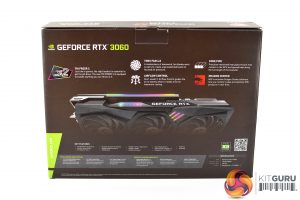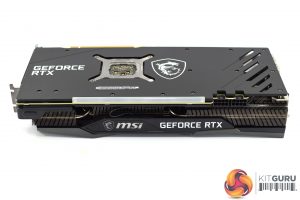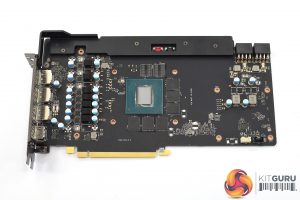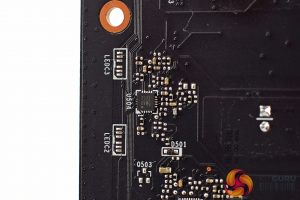MSI’s RTX 3060 Gaming X Trio ships in a large box, with an image of the graphics card visible on the front.
On the back, MSI highlights some key features, including the Tri Frozr 2 cooler, Torx 4.0 fans and Dragon Center software.
Inside, the usual range of booklets and guides are included, while we also find a GPU support bracket that will help eliminate GPU sag once the card is installed in your chassis.
We've already noted how this card uses the same shroud as MSI's other RTX 30-series cards. That means we have a black and grey plastic shroud, with a pretty edgy and aggressive ‘gamer-y’ appearance. Personally I quite like it, but that is of course going to be subjective. At the very least, it is completely colour neutral so you won’t have any issues installing this in a colour coordinated system.
The three fans also use MSI’s new Torx 4.0 design. Each measures approximately 92mm across, and the fan blades now come in pairs, with an outer section that directly attaches the two blades together. MSI says this ‘focuses airflow into the updated TRI FROZR 2 cooling system’, delivering 20% increased pressure compared to Torx 3.0.
Re-using the same shroud as MSI's RTX 3090 means this card is absolutely huge for a RTX 3060 – it measures 323 x 140 x 56mm.
MSI is also using a black plastic backplate on this card. It's a full-length design, with a cut-out behind the GPU core. We can also note a few more cut-outs toward the end of the card.
In terms of power connectors, the Gaming X Trio needs 2x 8-pin PCIe inputs. This is quite unnecessary for a 170W GPU, as a single 8-pin will deliver 150W while 75W is delivered through the PCIe x16 slot. The only reason I can see as to why the card has two power connectors is that MSI is re-using the same PCB as its RTX 3070 model.
For display outputs, we have the usual allocation of 3x DisplayPort 1.4 and 1x HDMI 2.1.
For the PCB, MSI is re-using the same design from its RTX 3070. It has a 7-phase VRM for the GPU, controlled by OnSemi's NCP81610, with OnSemi 302045 MOSFETs. The memory VRM is 2-phase, using Niko Semi PK698SA/PK616BA high and low-side dual N-Channel MOSFETs.
As for the cooler, it's again the same design as the RTX 3070. This means a total of three aluminium finstacks, connected by 6x6mm heatpipes which make direct contact with the GPU. One stack of memory also contacts with these heatpipes via thermal pads, while the other stack contacts with a baseplate. There's a couple of other plates used to cool the VRM.
 KitGuru KitGuru.net – Tech News | Hardware News | Hardware Reviews | IOS | Mobile | Gaming | Graphics Cards
KitGuru KitGuru.net – Tech News | Hardware News | Hardware Reviews | IOS | Mobile | Gaming | Graphics Cards






















